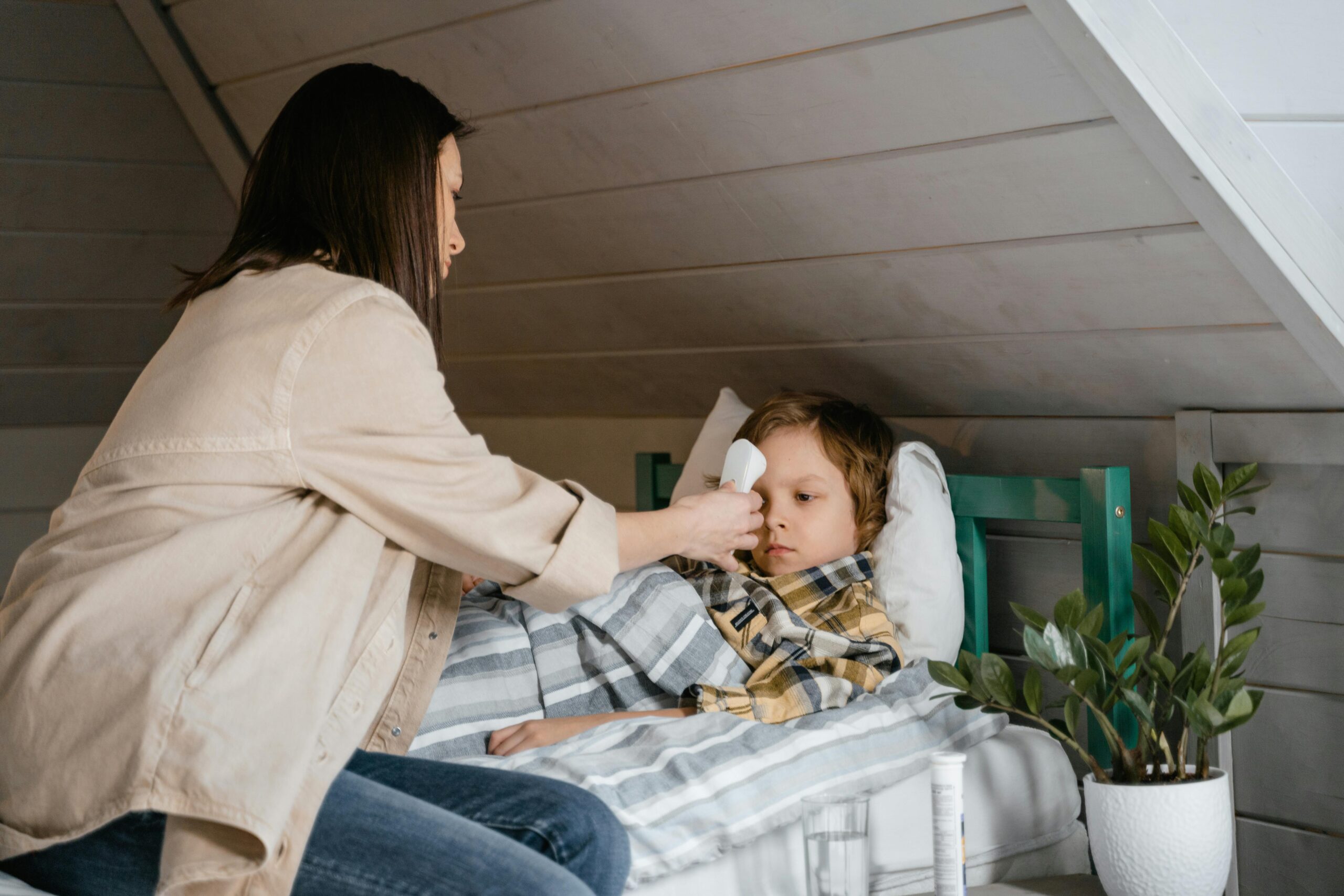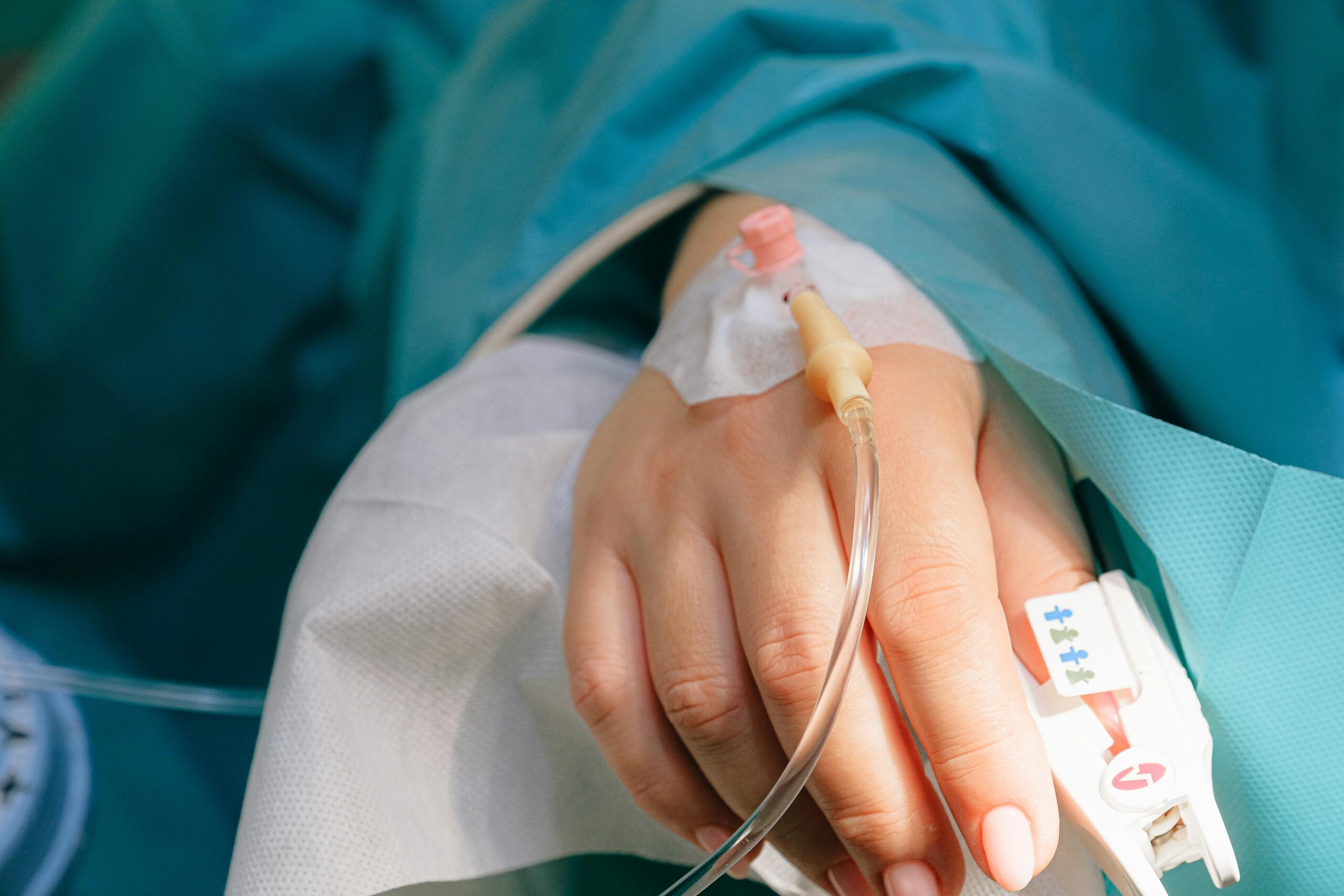Caring for a child involves addressing a myriad of health challenges, with Reflex Sympathetic Dystrophy Syndrome (RSDS) being a significant concern. Also known as Complex Regional Pain Syndrome (CRPS), RSDS requires comprehensive understanding for early detection, effective treatment, and the enhancement of your child’s quality of life. This detailed guide merges essential caregiving strategies with profound insights into RSDS, providing you with the knowledge and tools necessary to support your child throughout their health journey.
🌟 The Importance of Health Monitoring in Child Wellness
Ensuring your child’s health transcends beyond offering love, nutritious meals, and engaging activities. It demands vigilance for subtle changes that may signal underlying health issues. Regular health monitoring serves as a magnifying glass, enabling you to detect signs that might otherwise remain unnoticed. Early identification of conditions like Reflex Sympathetic Dystrophy (RSD) facilitates timely medical intervention, leading to improved outcomes for your child. By consistently observing and documenting your child’s health, you can create a comprehensive overview that aids healthcare professionals in making informed decisions.
🧠 What Is Reflex Sympathetic Dystrophy Syndrome?
Reflex Sympathetic Dystrophy (RSD), or Complex Regional Pain Syndrome (CRPS), is a chronic pain condition that impacts the sympathetic nervous system—the component responsible for regulating blood flow, heart rate, and blood pressure. Under normal circumstances, this system aids in managing pain and facilitating healing post-injury. However, in RSD, the nervous system becomes hyperactive, resulting in prolonged and excessive pain even after the initial injury has healed. Although RSD is rare in children, heightened awareness is essential for early detection and effective management. Understanding the mechanisms behind RSD can help caregivers recognize the signs early and seek appropriate treatment promptly.
🔍 Recognizing the Signs and Symptoms of RSD
Identifying RSD in children can be challenging as its symptoms often resemble other conditions. Key signs to watch for include:
- Persistent and Intense Pain: Pain that is disproportionately severe compared to the initial injury.
- Swelling and Skin Changes: Noticeable swelling accompanied by alterations in skin color, temperature, or texture in the affected area.
- Increased Sensitivity: Heightened sensitivity to touch, temperature changes, or even mild stimuli.
- Limited Mobility: Reduced range of motion, stiffness, or weakness in the affected limb.
- Abnormal Hair and Nail Growth: Changes in hair and nail growth patterns in the affected area.
- Joint Stiffness: Difficulty in moving the affected joint, leading to stiffness and discomfort.
If your child exhibits these symptoms following an injury, it is crucial to consult a healthcare professional promptly. Early diagnosis can significantly enhance treatment efficacy and improve your child’s quality of life. Additionally, understanding these symptoms can help differentiate RSD from other similar conditions, ensuring that your child receives the most appropriate care.
📚 Case Study: RSD in a 12-Year-Old Male
To illustrate the complexities of RSD in children, consider the following detailed case study.
📝 Introduction
Reflex Sympathetic Dystrophy (RSD) typically affects adults after trauma, leading to severe pain and loss of limb function. However, its occurrence in children is extremely rare and can be exacerbated by additional symptoms such as stridor (a high-pitched wheezing sound), gastritis, and cephalgia (headaches), making daily life challenging. This case study discusses a 12-year-old male who experienced nine months of these symptoms, which were unresponsive to traditional treatments but resolved following osteopathic manipulative treatments (OMT).
👦 Patient Background
- Name: B.R.
- Age: 12 years old
- Initial Complaint: Left elbow pain and stridor following a football injury.
- Injury Details: In September 2023, while playing football, B.R. was tackled, causing his elbow to be pinned against the ground. Despite experiencing significant pain and visible bruising from the elbow to the wrist, he continued playing and sought medical attention the next morning. Initial diagnoses labeled the injury as a “contusion,” with x-rays returning negative for fractures.
🏥 Medical Journey
Despite multiple consultations with orthopedic surgeons, an MRI confirmed the contusion diagnosis. Physical therapy yielded minimal improvement, and further recommendations for arthroscopy were declined by B.R.’s parents. Subsequently, B.R. developed additional symptoms:
- Stridor: Sudden, uncontrollable coughing episodes leading to shallow breathing.
- Gastritis and Cephalgia: Persistent stomach upset and headaches.
- Persistent Elbow Pain: Rated 8 out of 10 on the pain scale.
Multiple specialists, including allergists, neurologists, and gastroenterologists, were consulted. Treatments such as albuterol, steroids, and speech therapy proved ineffective in alleviating his symptoms.
🩺 Osteopathic Intervention
Seven months post-injury, B.R. sought osteopathic treatment. Comprehensive physical examinations revealed significant somatic dysfunctions, particularly in the T4 thoracic segment, which had not been addressed by previous treatments. Through a series of myofascial release and high-velocity, low-amplitude (HVLA) techniques, B.R. experienced remarkable improvements:
- Resolution of Stridor: Symptoms resolved within seven weeks of treatment.
- Improvement in Gastritis and Cephalgia: These symptoms ceased following osteopathic intervention.
- Reduction in Arm Pain: Pain decreased from 8 to 2 out of 10, enabling B.R. to resume sports activities.
Six months later, a recurrence of stridor following a basketball fall was successfully managed with additional osteopathic treatments, restoring normal function and eliminating symptoms permanently.
🔍 Discussion
This case underscores the significance of the osteopathic tenet of structure-function, highlighting how addressing somatic dysfunctions can alleviate complex symptoms. The persistent somatic issues at the T4 segment were pivotal in maintaining RSD symptoms. The restoration of structural balance through OMT not only resolved the immediate pain but also the associated visceral symptoms like gastritis and cephalgia, showcasing the interconnectedness of the musculoskeletal and autonomic nervous systems. This holistic approach emphasizes the importance of considering the body’s structural integrity in managing chronic pain conditions like RSD.
🛠️ The Role of Caregiver Tools in Health Monitoring
As a caregiver, your role in monitoring your child’s health is paramount. Effective tools include:
- Symptom Journals: Maintain a detailed record of your child’s symptoms, behavior changes, and recovery progress. This can help identify patterns and triggers, providing valuable information for healthcare professionals.
- Mobile Apps: Utilize symptom tracker apps to organize and analyze health data systematically. These apps can provide visual representations of symptom trends over time, making it easier to spot significant changes.
- Regular Check-Ins: Schedule consistent times to assess your child’s well-being, ensuring no changes go unnoticed. This routine can help in early detection of any emerging issues.
- Educational Resources: Access books, articles, and online resources to better understand RSD and its management. Being informed empowers you to make better decisions regarding your child’s care.
- Support Networks: Engage with support groups or online communities for caregivers dealing with similar challenges. Sharing experiences and strategies can provide emotional support and practical advice.
By diligently tracking health-related information, you can detect early warning signs and ensure timely medical intervention, enhancing your child’s chances of effective recovery.
🩺 When to Seek Medical Advice
Understanding what constitutes normal behavior and responses for your child is essential in recognizing when something is amiss. Seek medical advice if:
- Unexplained or Persistent Pain: Your child complains of pain that doesn’t align with the severity of an injury. This discrepancy may indicate an underlying issue like RSD.
- Swelling, Skin Changes, or Limited Mobility: Observing these signs after an injury warrants professional evaluation to rule out serious conditions.
- Behavioral Changes: Increased irritability, withdrawal, or changes in sleep patterns may indicate discomfort or pain that your child is struggling to express.
- Delayed Healing: Wounds or injuries that aren’t healing as expected could signal complications or chronic conditions requiring medical attention.
- Functional Impairments: Difficulty performing daily activities or participating in school and recreational activities due to pain or mobility issues.
Healthcare professionals can perform comprehensive assessments to determine the root cause and recommend appropriate treatment options, ensuring your child receives the necessary care promptly.
🤝 Collaborating with Healthcare Professionals for Effective Treatment
Early intervention is crucial in managing conditions like RSD. Treatment options may include:
- Physical Therapy: Aims to restore movement, improve strength, and reduce pain through targeted exercises and therapies. Consistent physical therapy can prevent the worsening of symptoms and promote healing.
- Pain Management Strategies: Incorporate techniques such as biofeedback, cognitive-behavioral therapy, and relaxation exercises to help your child manage pain and cope with the emotional aspects of chronic pain.
- Medication: In some cases, medications may be prescribed to manage symptoms. These can include pain relievers, anti-inflammatory drugs, and medications that target nerve pain.
- Osteopathic Manipulative Treatment (OMT): As demonstrated in the case study, OMT can address underlying structural issues contributing to RSD, providing relief from pain and improving overall function.
- Interdisciplinary Approach: Combining various treatment modalities ensures a comprehensive care plan tailored to your child’s specific needs. Collaboration among specialists such as orthopedic surgeons, neurologists, and osteopaths can enhance treatment outcomes.
- Patient and Family Education: Educating your child and family about RSD empowers you to participate actively in the treatment process, making informed decisions and adhering to therapeutic recommendations.
By working closely with healthcare providers, you ensure that your child receives comprehensive care tailored to their specific needs, fostering a supportive environment for recovery.
💖 Supporting Your Child Through Recovery
Creating a supportive environment is essential for your child’s recovery. Ways to support include:
- Open Communication: Encourage your child to express how they feel. Create a safe space where they can talk about their pain, fears, and frustrations without judgment.
- Involvement in Care: Involve them in their care plan to give them a sense of control. Allowing your child to make choices about their treatment can boost their confidence and cooperation.
- Gentle Activities: Incorporate activities like gentle exercises, stretching, and relaxation techniques to promote healing and reduce stress. Activities such as yoga or tai chi can be beneficial.
- Consistent Routine: Maintain a regular schedule to provide stability. Predictability in daily activities can help your child feel secure and reduce anxiety related to their condition.
- Emotional Support: Offer empathy and understanding. Acknowledge your child’s pain and challenges, providing reassurance and encouragement throughout their recovery journey.
- Adaptive Tools and Aids: Utilize tools such as braces, ergonomic furniture, or specialized equipment to assist with mobility and daily tasks, making life easier for your child.
- Positive Reinforcement: Celebrate small victories and progress, reinforcing positive behavior and resilience. Recognizing achievements can motivate your child to continue their efforts in recovery.
These strategies can aid in managing symptoms and promoting healing, fostering a nurturing environment that supports your child’s physical and emotional well-being.
🌱 Embracing Health Monitoring for Overall Wellness
Health monitoring isn’t just for detecting issues; it’s a proactive approach to maintaining wellness. Key aspects to monitor:
- Sleep Patterns: Ensure your child is getting adequate rest. Quality sleep is crucial for healing and overall health. Address any sleep disturbances promptly.
- Nutrition: Provide a balanced and nutritious diet to support your child’s physical health and recovery. Proper nutrition can enhance the body’s ability to heal and manage pain.
- Physical Activity: Encourage regular, age-appropriate exercise to maintain mobility and strength. Physical activity can also improve mood and reduce anxiety.
- Hydration: Ensure your child stays well-hydrated, as proper hydration is essential for bodily functions and recovery processes.
- Mental Health: Monitor your child’s emotional well-being. Chronic pain can impact mental health, so be attentive to signs of anxiety, depression, or stress.
- Academic Performance: Keep an eye on your child’s performance in school. Chronic health issues can affect concentration and academic achievement, necessitating supportive measures.
- Social Interactions: Encourage healthy social interactions to prevent isolation. Maintaining friendships and engaging in social activities can enhance your child’s emotional resilience.
By staying attentive and informed, you can make decisions that support your child’s growth and happiness, ensuring a balanced approach to their overall wellness.
💪 Empowering Yourself as a Caregiver
Remember, you are your child’s first line of defense in health matters. Empower yourself by:
- Trusting Your Instincts: If something feels off, seek professional advice. Your intuition as a caregiver is a valuable tool in recognizing when additional help is needed.
- Utilizing Resources: Access available tools and information to better understand your child’s condition. Educational materials, online resources, and support groups can provide valuable insights.
- Reaching Out for Support: Don’t hesitate to connect with healthcare professionals for guidance. Professional advice can help you navigate complex health situations effectively.
- Continuing Education: Stay informed about the latest research and advancements in RSD treatment. Attending workshops, seminars, and webinars can enhance your knowledge and caregiving skills.
- Time Management: Balance caregiving responsibilities with personal time to prevent burnout. Effective time management ensures you can provide consistent care without compromising your well-being.
- Advocacy: Advocate for your child’s needs within the healthcare system. Ensuring that your child receives appropriate care and support requires active participation and communication with healthcare providers.
- Self-Reflection: Regularly assess your own well-being and coping strategies. Understanding your strengths and areas for improvement can enhance your caregiving effectiveness.
Your dedication and proactive approach can make a profound impact on your child’s well-being, fostering a positive and resilient environment for their recovery.
📚 Educational Support and Tools
Understanding RSD and its impact on your child’s daily life is essential for effective caregiving. Educate yourself about the disease, treatment options, and caregiving strategies to provide the best possible support.
- Develop a Knowledge Base: Read books, attend seminars, and engage with online resources to deepen your understanding of RSD. Comprehensive knowledge enables you to make informed decisions and advocate effectively for your child.
- Use Educational Tools: Platforms like AdvoMedix offer access to RSD-related resources and articles, providing valuable insights into the latest research and treatment methodologies.
- Stay Updated: Keep informed about the latest studies and treatment advancements to ensure your loved one receives the most current care. Subscribing to medical journals, newsletters, and reputable websites can keep you abreast of new developments.
- Interactive Learning: Participate in workshops and training sessions focused on managing chronic pain and supporting children with RSD. Hands-on learning can enhance your practical skills and confidence.
- Community Engagement: Join support groups or forums where caregivers share experiences and strategies. Learning from others can provide practical tips and emotional support.
- Consult Professionals: Engage with healthcare providers to gain a deeper understanding of your child’s specific condition and treatment plan. Personalized information can guide your caregiving approach effectively.
By prioritizing educational support, you help your loved one navigate RSD complexities and make informed treatment and care decisions, ensuring comprehensive and effective support throughout their health journey.
🧘♀️ Prioritizing Self-Care
Caring for a child with RSD can be physically and emotionally demanding. Prioritizing your own well-being is essential to maintain the energy and resilience needed to support your loved one.
- Take Breaks: Ensure regular breaks to rest and recharge, preventing caregiver burnout. Short periods of rest can rejuvenate your mind and body, enhancing your caregiving capacity.
- Engage in Hobbies: Pursue activities that bring joy and relaxation, balancing caregiving stresses. Whether it’s reading, gardening, or painting, hobbies can provide a much-needed respite.
- Seek Support: Lean on friends, family, or professional support services when needed, recognizing that seeking help is a sign of strength. Sharing your experiences can alleviate stress and provide emotional relief.
- Mindfulness Practices: Incorporate mindfulness techniques such as meditation, deep breathing, or yoga to manage stress and maintain emotional balance. These practices can enhance your mental well-being and resilience.
- Physical Health: Maintain your own physical health through regular exercise, a balanced diet, and adequate sleep. A healthy body supports a healthy mind, enabling you to care for your child more effectively.
- Professional Counseling: Consider speaking with a counselor or therapist to navigate the emotional challenges of caregiving. Professional guidance can offer strategies to cope with stress and maintain mental health.
- Set Boundaries: Establish clear boundaries to ensure you have time for yourself. Balancing caregiving with personal time prevents exhaustion and promotes long-term sustainability.
Balancing emotional well-being ensures that both you and your loved one can navigate RSD challenges with resilience and a positive outlook, fostering a supportive and nurturing environment.
🌿 Promoting Positive Coping Mechanisms
Mindfulness and relaxation: Practices like meditation, deep breathing, or yoga help manage stress and promote emotional well-being. These techniques can reduce anxiety and improve your child’s ability to cope with pain.
Physical activity: Encourage enjoyable physical activities to boost mood and reduce anxiety. Activities such as swimming, biking, or team sports can provide both physical benefits and emotional relief.
Creative outlets: Activities like drawing, writing, or playing music provide healthy outlets for expressing emotions and processing experiences. Creative expression can help your child articulate feelings that are difficult to express verbally.
Social engagement: Facilitate interactions with peers and participation in group activities to prevent isolation. Building social connections can enhance your child’s emotional support network and overall happiness.
Routine and structure: Establishing a consistent daily routine can provide a sense of normalcy and security. Predictable schedules help manage expectations and reduce anxiety related to uncertainty.
Positive reinforcement: Celebrate small victories and progress to build your child’s confidence and motivation. Recognizing achievements fosters a sense of accomplishment and encourages continued effort in managing their condition.
Balancing emotional well-being ensures that both you and your loved one can navigate RSD challenges with resilience and a positive outlook, fostering a supportive and nurturing environment.
🔬 Advances in Treatment: Carpal Tunnel Release and Beyond
Recent studies have explored innovative surgical and non-surgical interventions for RSD, particularly focusing on the efficacy of carpal tunnel release (CTR) in patients diagnosed with Complex Regional Pain Syndrome (CRPS), also known as RSD.
🛠️ Outcomes of Carpal Tunnel Release in RSD Patients
A study by del Piñal, Francisco M.D., Ph.D., published in Plastic and Reconstructive Surgery (2022), examined the outcomes of carpal tunnel release in patients with CRPS/RSD. The study involved 53 patients with an average age of 55 years who underwent CTR due to persistent symptoms resembling RSD. Key findings include:
- Pain Reduction: At a minimum of six months’ follow-up, pain levels dropped by 7.5 points on a numerical rating scale (0-10), which was statistically significant (p < 0.001).
- Improved Functionality: Disabilities of the Arm, Shoulder, and Hand (DASH) scores fell from 82 to 17 (p < 0.001), indicating a significant improvement in arm functionality.
- Success Rate: Only six patients reported unsatisfactory results, indicating a high success rate of CTR in alleviating RSD symptoms.
Conclusion: Some patients with RSD may respond successfully to carpal tunnel release surgery. Recognizing this possibility is crucial, as symptoms and signs might otherwise lead clinicians away from the proper diagnosis and treatment. This study highlights the importance of considering surgical interventions in the comprehensive management of RSD when conservative treatments fail to provide relief.
📈 The Relation Between Reflex Sympathetic Dystrophy Syndrome and Trauma Severity
Another significant study by Bahador et al. explored the relationship between trauma severity and the prevalence of RSD in patients with distal tibial fractures.
🩺 Study Overview
- Objective: To determine if the severity of trauma correlates with the likelihood of developing RSD.
- Method: A cross-sectional study of 488 patients with distal tibial fractures, assessing injury severity using the Hannover Fracture Scale 98 (HFS98).
- Results:
- Prevalence: RSD occurred in 45 patients (9.2%), with a higher prevalence in females (62.22%).
- Injury Severity: No significant relationship was found between injury severity and RSD occurrence (P = 0.363).
- Local Circulation: Patients with RSD had significantly better local circulation scores compared to those without RSD.
- Conclusion: The severity of injury alone does not predict the probability of developing RSD. Other factors, such as genetic predispositions and limb immobilization techniques, may play a more significant role.
This study suggests that while trauma is a common trigger for RSD, the severity of the injury is not the sole determinant of its development. Understanding the multifactorial nature of RSD can aid in developing more effective prevention and treatment strategies.
📘 Conclusion: Taking Charge of Your Child’s Health Journey
Understanding potential health conditions like RSD and actively monitoring your child’s well-being ensures they receive timely and effective care. Key takeaways include:
- Stay Informed: Knowledge about RSD empowers you to recognize and address it early, facilitating better treatment outcomes.
- Use Monitoring Tools: Keep detailed records to track your child’s health, identifying patterns that may indicate emerging issues.
- Collaborate with Professionals: Work closely with healthcare providers for comprehensive care, ensuring all aspects of your child’s health are addressed.
- Provide Support: Create a nurturing environment that promotes recovery and overall wellness, fostering emotional and physical resilience.
- Embrace Health Monitoring: Adopt proactive health monitoring as a valuable practice in supporting your child’s happiness and health, ensuring a balanced approach to their well-being.
By taking charge of your child’s health journey, you play a crucial role in enhancing their quality of life and ensuring they receive the care and support they need to thrive.
📖 References
- del Piñal, F. M. (2022). Outcomes of Carpal Tunnel Release in Complex Regional Pain Syndrome/Reflex Sympathetic Dystrophy/Sudeck Disease Patients. Plastic and Reconstructive Surgery, 150(1), 93-101. https://doi.org/10.1097/PRS.0000000000009243
- Bahador, R., Mirbolook, A., Arbab, S., Derakhshan, P., Gholizadeh, A., & Abedi, S. (2016). The Relation Between Reflex Sympathetic Dystrophy Syndrome and Trauma Severity in Patients With Distal Tibia Fracture. Journal of Trauma and Acute Care Surgery, 80(4), 741-747. PMC5003432
- Vlaeyen, J. W. S., & Linton, S. J. (2012). Fear-avoidance and its consequences in chronic musculoskeletal pain: A state of the art. Pain, 153(6), 1144-1147. https://doi.org/10.1016/j.pain.2011.12.011
- Birklein, F., & Baron, R. (2003). The neuropathic pain component in Complex Regional Pain Syndrome type I (CRPS I). Pain, 106(3), 273-280. https://doi.org/10.1016/S0304-3959(02)00350-3
- Moseley, G. L., & Hodges, P. W. (2006). Evidence for a sensorimotor incongruence in chronic back pain: Painful episodes are associated with altered perception of movement. Pain, 123(1-3), 97-105. https://doi.org/10.1016/j.pain.2006.07.010
For an in-depth exploration of RSD, refer to the original articles and publications cited above.
Are you or someone you know dealing with RSD? Stay informed and proactive with regular health screenings and consult with healthcare professionals to tailor the best treatment strategy.
Disclaimer: Digital Elevate Partners and digitalelevatepartners.com are not licensed medical professionals. The content provided on our website and platforms, including opinions, information, and recommendations, is for informational purposes only and should not be considered medical advice, diagnosis, or treatment. Always seek the advice of a licensed healthcare provider for any medical concerns or decisions. Reliance on any information provided by Digital Elevate Partners is solely at your own risk.




